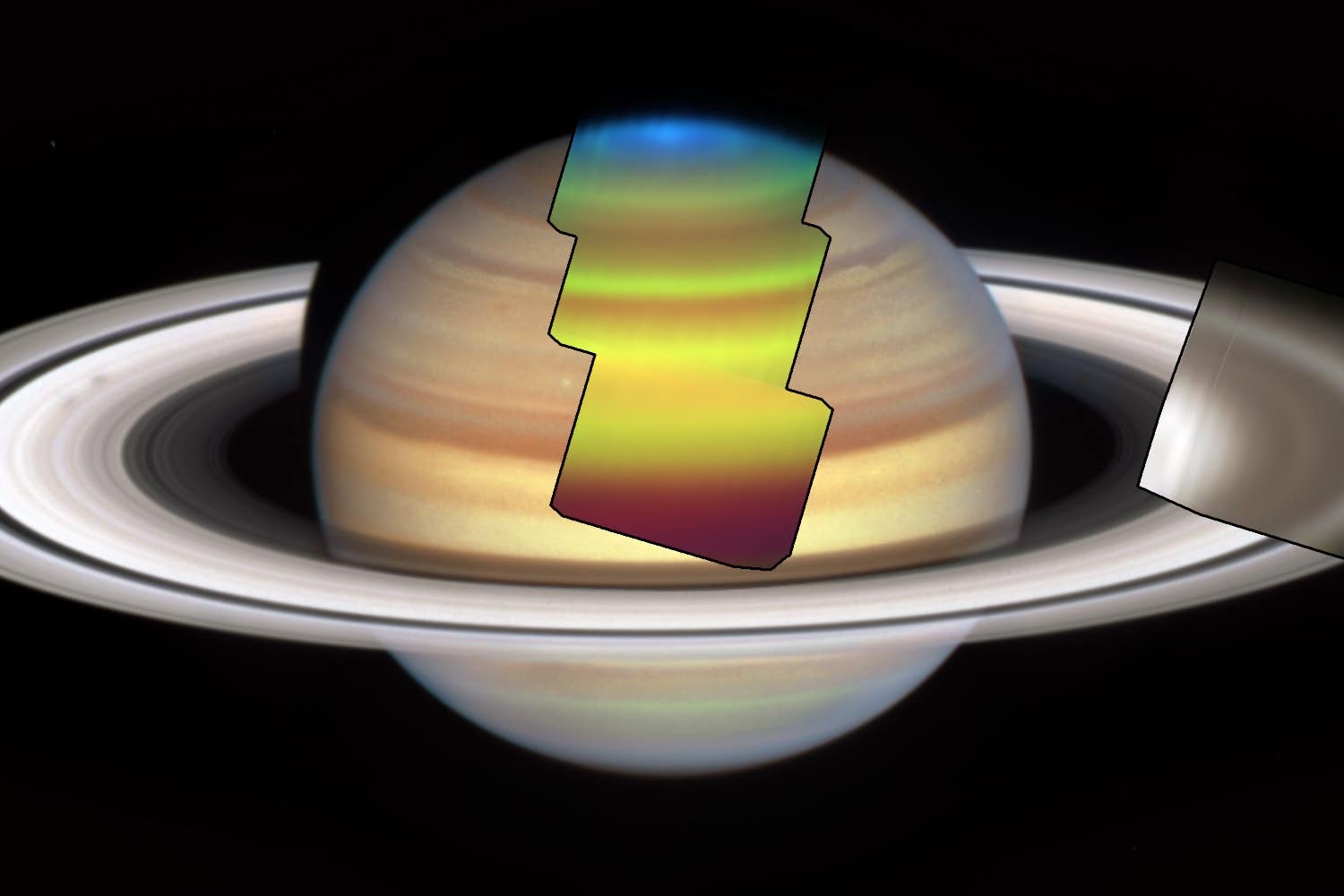New Saturn images show a change of seasons
The new observations have also provided a last glimpse of Saturn’s north pole, before it begins to recede into the darkness of polar winter.

Your support helps us to tell the story
From reproductive rights to climate change to Big Tech, The Independent is on the ground when the story is developing. Whether it's investigating the financials of Elon Musk's pro-Trump PAC or producing our latest documentary, 'The A Word', which shines a light on the American women fighting for reproductive rights, we know how important it is to parse out the facts from the messaging.
At such a critical moment in US history, we need reporters on the ground. Your donation allows us to keep sending journalists to speak to both sides of the story.
The Independent is trusted by Americans across the entire political spectrum. And unlike many other quality news outlets, we choose not to lock Americans out of our reporting and analysis with paywalls. We believe quality journalism should be available to everyone, paid for by those who can afford it.
Your support makes all the difference.As the UK has been experiencing record-breaking heat in September, Saturn’s late northern summer is experiencing a cooling trend, scientists have found.
The new observations have also provided a last glimpse of Saturn’s north pole, with its enormous warm vortex filled with hydrocarbon gases, before the pole begins to recede into the darkness of polar winter.
The weather report is thanks to new images analysed by a team led by the University of Leicester from the James Webb Space Telescope (JWST).
The quality of the new data from JWST is simply breathtaking
Published in JGR: Planets, the researchers have provided new insights into the changing seasons on the massive outer planet, famous for its icy rings.
Professor Leigh Fletcher, from the University of Leicester School of Physics and Astronomy, said: “The quality of the new data from JWST is simply breathtaking – in one short set of observations, we’ve been able to continue the legacy of the Cassini mission into a completely new Saturnian season, watching how the weather patterns and atmospheric circulation respond to the changing sunlight.
“JWST can see in wavelengths of light that were inaccessible to any previous spacecraft, producing an exquisite dataset that whets the appetite for the years to come.
“This work on Saturn is just the first of a programme of observations of all four giant planets, and JWST is providing a capability beyond anything we’ve had in the past – if we can get so many new findings from a single observation of a single world, imagine what discoveries await.”
Like Earth, Saturn tilts on an axis and experiences seasons in the same way.
However, Saturn takes 30 years to orbit the Sun, so the seasons last for seven and a half Earth years.
As summer in the northern hemisphere on both planets is now coming to an end, and Earth is heading for northern autumn equinox in September, Saturn is heading for northern autumn equinox in 2025.
This means the north poles of both planets are heading for extended periods of polar winter, researchers say.
No spacecraft has ever been present to explore Saturn’s late northern summer and autumn before, so we hope that this is just the starting point, and that JWST can continue the legacy of Cassini into the coming decade
The Leicester team used the MIRI instrument on JWST to study Saturn’s atmosphere in infrared light, which allows them to measure the temperatures, gases and clouds from the churning cloud tops to regions high in the atmosphere known as the stratosphere.
The instrument allows scientists to see the fingerprints of the rich variety of chemicals within a planet’s atmosphere.
In the image the bright thermal emission from the north pole stands out in blue.
The warm 1500km-wide north polar cyclone (NPC), which was first observed by the Cassini mission, can be seen at the north pole.
This is surrounded by a broader region of warm gases called the north-polar stratospheric vortex (NPSV), which formed in Saturnian spring.
As the 2025 autumn equinox approaches, the north polar stratospheric vortex will begin cooling down and will disappear as the northern hemisphere recedes into the darkness of autumn.
In the study the scientists noticed that the distributions of stratospheric temperatures and gases at this particular point in Saturn’s seasonal cycle were different to those observed by the Cassini mission during northern winter and spring.
According to the research, Saturn has a circulation pattern with warmer temperatures and excess hydrocarbons in the northern midlatitudes in winter, signifying sinking of hydrocarbon-rich air from above.
Air was thought to rise in the southern summer midlatitudes, cross the equator, and sink into the northern winter midlatitudes.
But the new findings revealed that this stratospheric circulation has now reversed and cool temperatures are seen in the north, suggesting upwelling of hydrocarbon-poor air in the summer, which will then be flowing towards the south.
Prof Fletcher added: “No spacecraft has ever been present to explore Saturn’s late northern summer and autumn before, so we hope that this is just the starting point, and that JWST can continue the legacy of Cassini into the coming decade.”